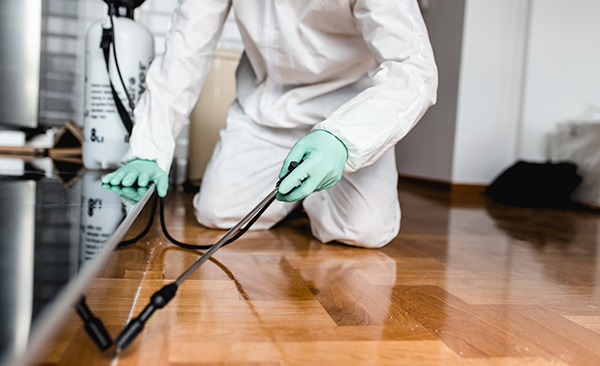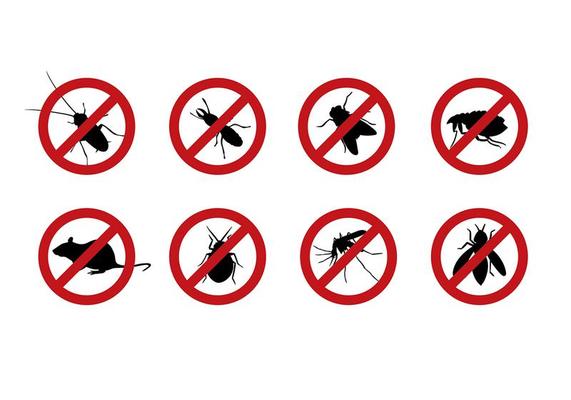Discovering Invasion and Therapy Techniques worldwide of Bug Control
The landscape of pest control includes a myriad of difficulties, especially as problems of typical family insects proceed to evolve. By integrating precautionary actions with sophisticated administration techniques, such as Integrated Pest Management (IPM), house owners can better safeguard their atmospheres.

Usual Home Pests
When it concerns handling our living rooms, comprehending typical household insects is vital. These insects not only interrupt our comfort however can additionally position health and wellness threats and damage building. One of the most prevalent family parasites include ants, roaches, rats, termites, and bed insects.
Ants, often seen foraging in kitchen areas, can infect food and develop big nests. Roaches, recognized for their durability, can activate allergies and spread pathogens. Rodents, consisting of mice and rats, can trigger structural damages and lug illness like hantavirus and salmonella. Termites, usually described as "silent destroyers," can jeopardize the stability of wood structures, causing costly repair services. Bed pests, although not illness carriers, can trigger considerable pain with their attacks and bring about psychological distress.
Identifying the signs of these bugs, such as droppings, nests, or attack marks, is crucial for very early intervention (Pest Control Lockhart). Proper hygiene practices, securing entry factors, and preserving a clutter-free setting are effective preventative procedures. By recognizing these typical household insects and comprehending their actions, homeowners can take proactive actions to minimize infestations, making certain a healthier living setting
Understanding Pest Infestations
Bug infestations can rise quickly, transforming a small nuisance into a considerable trouble if not dealt with immediately. Understanding the nature of these infestations is essential for reliable monitoring. Parasites can get into household and commercial rooms for different factors, consisting of the look for food, shelter, or breeding grounds. Usual factors adding to invasions include bad cleanliness, structural susceptabilities, and seasonal modifications that drive bugs inside.
Recognizing the type of parasite is crucial, as different varieties show different habits and reproductive prices. For instance, rodents may develop nests in hidden locations while insects like cockroaches thrive in wet settings. Early discovery commonly rests on acknowledging indications such as droppings, gnaw marks, or unusual noises, which can indicate an issue before it ends up being extreme.
Ecological conditions additionally play a crucial role in parasite spreading. Warm, humid climates can help with the rapid development of pest populaces, while adjustments in landscape design or building and construction can unintentionally create favorable environments. Regular evaluations and preventative actions are paramount to minimizing the danger of infestations. An enlightened approach to recognizing these dynamics prepares for reliable bug management techniques in the future.
Treatment Approaches and Strategies
Reliable treatment techniques and techniques are important for alleviating pest invasions and restoring a risk-free environment. A multifaceted technique is usually best, integrating chemical, biological, and mechanical methods customized to the specific parasite and the intensity of the problem.
Chemical therapies consist of the use of pesticides and herbicides, which can efficiently eliminate parasites. Nonetheless, proper application and adherence to safety guidelines are crucial to reduce threats to human beings and non-target microorganisms. Integrated Insect Monitoring (IPM) encourages the judicious use chemicals as a last hotel, relying instead on monitoring and threshold degrees to determine treatment needs.
Organic control methods include presenting all-natural predators or bloodsuckers to decrease pest populations. This approach is progressively prominent, particularly in agricultural setups, as it promotes environmental sustainability.
Mechanical methods, such as traps and barriers, offer prompt remedy for parasites without presenting chemicals. Choices include sticky catches for bugs or physical obstacles for rodents.
Ultimately, the choice of treatment technique need to take into consideration the particular insect, the environment, and possible effects on human health and ecological communities. A balanced combination of these techniques can effectively take care of problems while advertising lasting parasite control services.
Safety Nets for Homes
Proactively addressing parasite issues prior to they escalate is vital for maintaining a healthy home environment (Pest Control Lockhart). Executing efficient safety nets can considerably lower the chance of invasions, inevitably protecting both your building and wellness

Proper landscape design likewise plays an essential duty in avoidance. Maintaining bushes and trees cut away from the home lowers the opportunities of bugs locating their means inside your home. Make sure that drainage systems are functioning efficiently to protect against standing water, which can attract in mosquitoes and other insects.
Last but not least, regular examinations are suggested. Routinely checking for indications of insect activity permits early treatment. By embracing these safety nets, house owners can develop an environment site here that is less welcoming to parasites, therefore enhancing their total top quality of life and reducing the requirement for extensive pest control interventions.
Commercial Bug Control Strategies
A comprehensive strategy to business parasite control is essential for businesses intending to maintain a risk-free and hygienic setting. Reliable methods entail a combination of normal assessments, worker training, and the implementation of Integrated Bug Administration (IPM) practices.
Normal inspections allow early detection of insect task, enabling timely treatment. Companies must create a routine timetable for these evaluations, concentrating on high-risk locations such as kitchen areas, storeroom, and garbage disposal sites. Employee training is equally vital; team must be enlightened on the indicators of parasite problems and the relevance of reporting them promptly.
Applying IPM methods see page assists alleviate parasite problems sustainably. This includes environment alteration, such as sealing entrance points and reducing mess, along with employing all-natural deterrents before turning to chemical treatments.

In addition, collaborating with a certified insect control company ensures accessibility to specialist knowledge and innovative therapy alternatives. This collaboration can cause personalized bug control intends tailored to the certain requirements of the service, reducing risks and enhancing general efficacy. Eventually, a positive and enlightened strategy fosters a pest-free atmosphere, securing both public wellness and company reputation.
Final Thought
In conclusion, effective pest control necessitates a detailed understanding of common home pests and their behaviors, paired with targeted therapy techniques. Carrying out precautionary steps alongside treatment approaches such as Integrated Insect Monitoring and biological control enhances the capability to mitigate infestations. Normal examinations and a mix of chemical and mechanical remedies even more add to maintaining pest-free settings. Inevitably, an all-around approach to pest monitoring is important for protecting living spaces from undesirable trespassers.